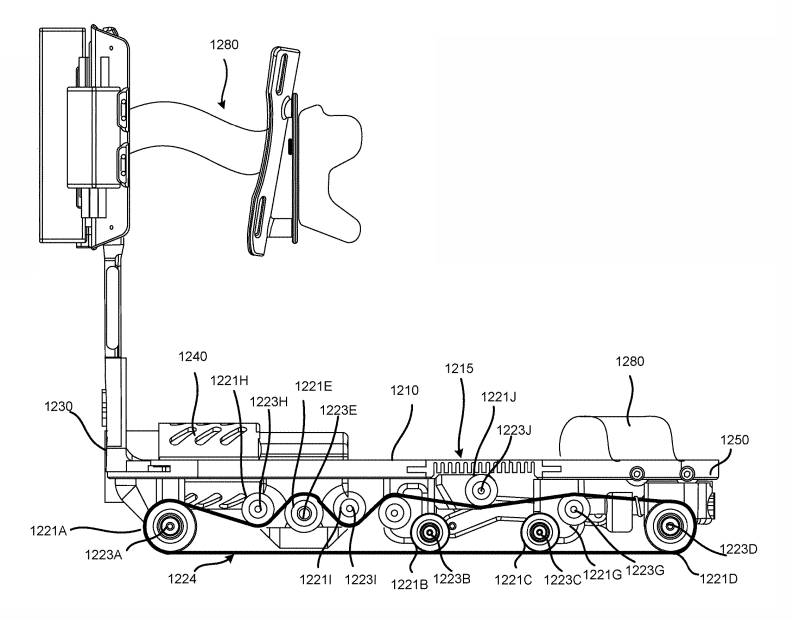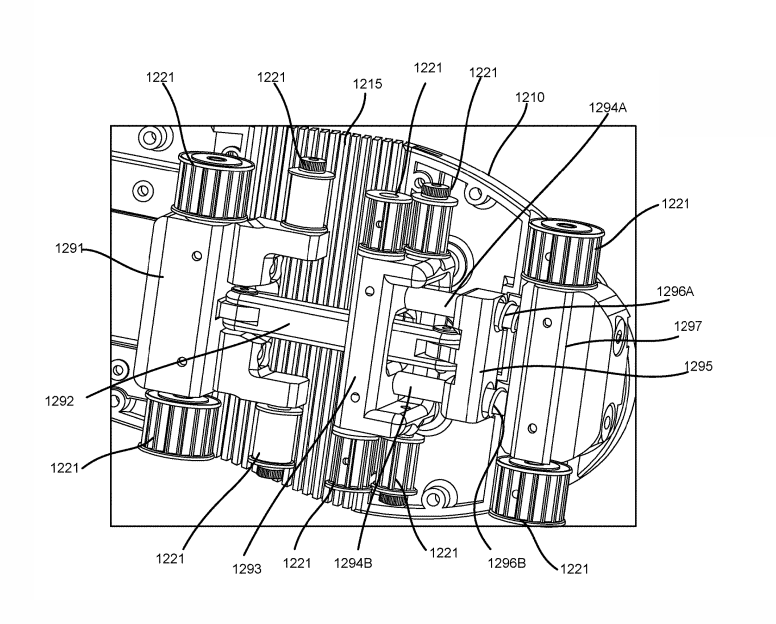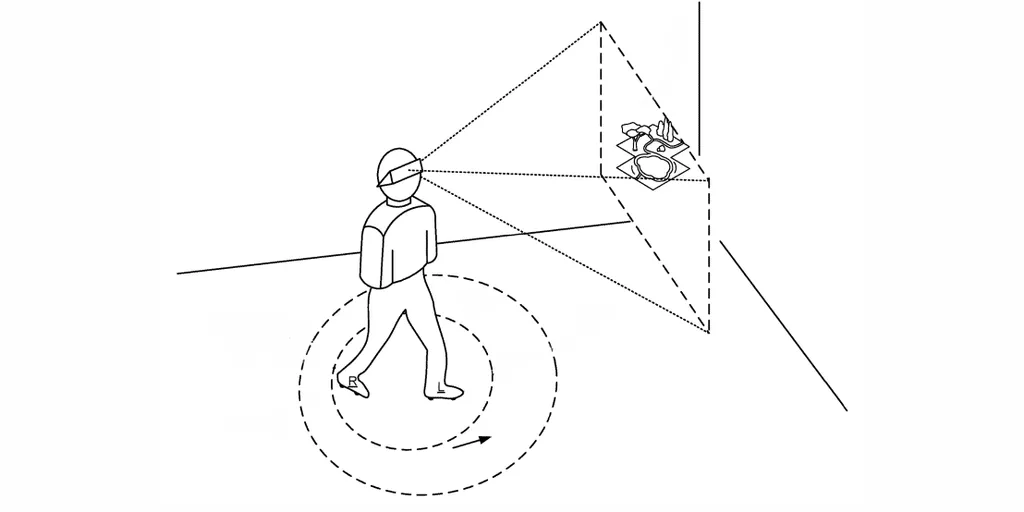Alphabet’s Google has filed a patent application for a new approach to VR walking shoes. The shoes described use tiny motorized wheels on the bottom to subtly redirect the user back to the center of their room when they walk towards the edges. If done correctly, the user would feel as if they have an infinite VR playspace.
The approach is an extension of earlier ideas of “infinite redirected walking”, which used purely visual distortions in scale of the virtual environment to try and achieve the same effect through tricking the user’s eyes. The issue with those approaches however is that they still required a very large playspace of around 20×20 feet to be effective, and may only be effective in indoor virtual environments. By adding actual movement to the user’s shoes, the redirection can be both optical and physical. As you’re walking towards the edge of the room, the motors in the shoes will activate in the opposite direction when your feet touch the ground.

Until recently, the main approach to physically walking through large virtual environments has been omnidirectional treadmills (ODTs) such as Kat Walk Mini or Omni. ODTs are pretty great at providing a true feeling of walking, but their sheer size means they are expensive both to build and to ship. Many people wouldn’t be able to fit them through their doors, requiring “assemble on delivery” designs that are even more complex and costly.
A much more simple approach to VR shoes is that of the recently successful Cybershoes Kickstarter. Cybershoes approach is to have the player seated on a bar stool like chair and slide along a slippery surface with slippery shoes. Very simple rollers transmit movement data back to the PC, but they are not motorized in any way. The main advantage of Cybershoes is its significantly lower cost compared to alternatives.
The disadvantage of the Cybershoes, and the main problem Google’s approach seems to be tackling is that it only works seated. In Cybershoes you can’t go prone, you can’t crouch, you can’t sneak, and being seated detracts from the immersion if your character is supposed to be standing. A standing solution without having to install or strap into a full omnidirectional treadmill could potentially bring standing walking VR to regular consumers one day.

Questions remain about how much these kinds of shoes would cost, whether the motors could be reliable enough for a consumer product, and just how seamless it would actually feel to use. But if the approach described in Google’s patent application truly works, it could be a revolution for VR locomotion. We’ll keep you updated on any further patents or news from Google about innovative VR locomotion solutions.


























